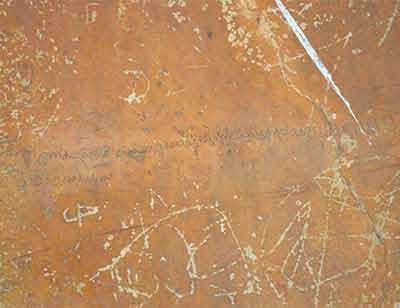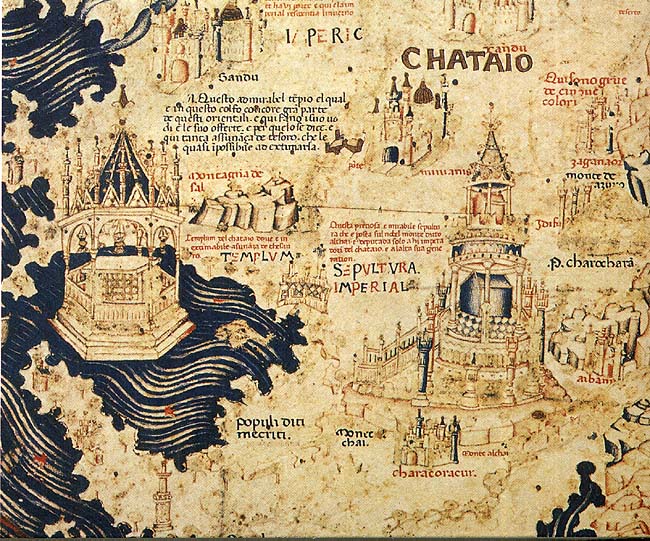|
Nankhatai
Nankhatai (; Burmese: နံကထိုင်; Hindustani: नानख़टाई (Hindi) ਨਾਨ ਖਟਾਈ ( Punjabi) / (Urdu); ; Tamil: நானஹத்தா) are shortbread biscuits originating from the Gujarat region of the Indian subcontinent, popular in Northern India, Pakistan, Bangladesh, Sri Lanka, and Myanmar (formerly Burma). Etymology The word ''nankhatai'' is derived from the Classical Persian , , composed of meaning ‘bread’ and meaning ‘ Cathayan’. The word has been borrowed into the Burmese language as ''nankahtaing'' (နံကထိုင်), in the Tamil language (in East Tamil Nadu) as ''naanahatha'' (நானஹத்தா), and in the Sinhala language (in Sri Lanka) as ''ghanakatha'' (ඤාණකතා). In Afghanistan and northeastern Iran, these biscuits are called ''kulcha-i khaṭāʾī'' in Persian (''kulcha'' is a type of Afghan, Iranian and Indian bread similar to '' nān''). It is also a mispronunciation of ''naan- ... [...More Info...] [...Related Items...] OR: [Wikipedia] [Google] [Baidu] |
Pakistani Cuisine
Pakistani cuisine (, Roman Urdu, romanized: ''pākistānī pakwān'') is a blend of regional cooking styles and flavours from across South Asia, South, Central Asia, Central and West Asia. It is a culmination of Iranic, Indic & Arab culinary traditions. The cuisine of Pakistan also maintains certain Mughal Empire, Mughal influences within its recipes and cooking techniques, particularly the use of dried fruits and nuts. Pakistan's Ethnic groups in Pakistan, ethnic and Culture of Pakistan, cultural diversity, diverse climates, geographical environments, and availability of different produce lead to diverse regional cuisines. Pakistani cuisine, like the culinary traditions of most Muslim-majority nations, adheres to ''halal'' principles in accordance with Islamic dietary laws, which prohibit the consumption of pork and alcohol, among other restrictions. Additionally, halal regulations outline specific guidelines for meat consumption, including which animals are considered permi ... [...More Info...] [...Related Items...] OR: [Wikipedia] [Google] [Baidu] |
Shortbread
Shortbread or shortie is a traditional Scottish biscuit usually made from one part sugar, white sugar, two parts butter and three to four parts plain flour, plain wheat flour. Shortbread does not contain leavening, such as baking powder or baking soda. Shortbread is widely associated with Christmas and Hogmanay festivities in Scotland, and some Scottish brands are exported around the world. History Shortbread originated in Scotland. Although it was prepared during much of the 12th century, and probably benefited from cultural exchange with French pastry chefs during the Auld Alliance between France and Scotland, the refinement of shortbread is popularly credited to Mary, Queen of Scots in the 16th century. Despite the enduring popular association, evidence for any connection between Mary and shortbread's origin is sparse.Emma Kay, ''A History of British Baking: From Blood Bread to Bake-Off'' (Pen & Sword, 2020) pp. 113–114. "Despite the endless citations linking Mary Queen o ... [...More Info...] [...Related Items...] OR: [Wikipedia] [Google] [Baidu] |
Indian Subcontinent
The Indian subcontinent is a physiographic region of Asia below the Himalayas which projects into the Indian Ocean between the Bay of Bengal to the east and the Arabian Sea to the west. It is now divided between Bangladesh, India, and Pakistan. (subscription required) Although the terms "Indian subcontinent" and "South Asia" are often also used interchangeably to denote a wider region which includes, in addition, Bhutan, the Maldives, Nepal and Sri Lanka, the "Indian subcontinent" is more of a geophysical term, whereas "South Asia" is more geopolitical. "South Asia" frequently also includes Afghanistan, which is not considered part of the subcontinent even in extended usage.Jim Norwine & Alfonso González, ''The Third World: states of mind and being'', pages 209, Taylor & Francis, 1988, Quote: ""The term "South Asia" also signifies the Indian Subcontinent""Raj S. Bhopal, ''Ethnicity, race, and health in multicultural societies'', pages 33, Oxford University Press, 2007, ; Q ... [...More Info...] [...Related Items...] OR: [Wikipedia] [Google] [Baidu] |
Iran
Iran, officially the Islamic Republic of Iran (IRI) and also known as Persia, is a country in West Asia. It borders Iraq to the west, Turkey, Azerbaijan, and Armenia to the northwest, the Caspian Sea to the north, Turkmenistan to the northeast, Afghanistan to the east, Pakistan to the southeast, and the Gulf of Oman and the Persian Gulf to the south. With a Ethnicities in Iran, multi-ethnic population of over 92 million in an area of , Iran ranks 17th globally in both List of countries and dependencies by area, geographic size and List of countries and dependencies by population, population. It is the List of Asian countries by area, sixth-largest country entirely in Asia and one of the world's List of mountains in Iran, most mountainous countries. Officially an Islamic republic, Iran is divided into Regions of Iran, five regions with Provinces of Iran, 31 provinces. Tehran is the nation's Capital city, capital, List of cities in Iran by province, largest city and financial ... [...More Info...] [...Related Items...] OR: [Wikipedia] [Google] [Baidu] |
Northern China
Northern China () and Southern China () are two approximate regions that display certain differences in terms of their geography, demographics, economy, and culture. Extent The Qinling, Qinling–Daba Mountains serve as the transition zone between northern and southern China. They approximately coincide with the 0 degree Celsius Contour line#Temperature and related subjects, isotherm in January, the Contour line#Rainfall and air moisture, isohyet, and the 2,000-hour sunshine duration contour. The Huai River basin serves a similar role, and the Qinling–Huaihe Line, course of the Huaihe has been used to set different policies to the north and the south. History Historically, populations migrated from the north to the south, especially its coastal areas and along major rivers. After the fall of the Han dynasty, The Southern and Northern Dynasties (420–589) ruled their respective part of China before re-uniting under the Tang dynasty. During the Qing dynasty, regiona ... [...More Info...] [...Related Items...] OR: [Wikipedia] [Google] [Baidu] |
Sinhala Language
Sinhala ( ; Sinhala: , , ), sometimes called Sinhalese ( ), is an Indo-Aryan language primarily spoken by the Sinhalese people of Sri Lanka, who make up the largest ethnic group on the island, numbering about 16 million. It is also the first language of about 2 million other Sri Lankans, as of 2001. It is written in the Sinhalese script, a Brahmic script closely related to the Grantha script of South India. The language has two main varieties, written and spoken, and is a notable example of the linguistic phenomenon known as diglossia. Sinhala is one of the official and national languages of Sri Lanka. Along with Pali, it played a major role in the development of Theravada Buddhist literature. Early forms of the Sinhalese language are attested to as early as the 3rd century BCE. The language of these inscriptions, still retaining long vowels and aspirated consonants, is a Prakrit similar to Magadhi, a regional associate of the Middle-Indian Prakrits that had been ... [...More Info...] [...Related Items...] OR: [Wikipedia] [Google] [Baidu] |
Kulcha
Kulcha is a Persian term for a disc-shaped loaf of leavened bread. In India India, officially the Republic of India, is a country in South Asia. It is the List of countries and dependencies by area, seventh-largest country by area; the List of countries by population (United Nations), most populous country since ..., this term is commonly used for regular English bread (which is disc-shaped). Origin and terminology The term ''kulcha'' is Persian and describes a disc-shaped loaf of bread, bun or even biscuit. However, in India this term came to be associated with round breads popularized during the British colonial period. In some parts of India, naan or tandoori parantha is often confused with kulcha. See also * List of Indian breads * List of Pakistani breads References External links * {{Indian Dishes Indian breads Pakistani breads Indian cuisine Kashmiri cuisine Punjabi cuisine Punjabi words and phrases Roti Flatbread dishes ... [...More Info...] [...Related Items...] OR: [Wikipedia] [Google] [Baidu] |
Afghanistan
Afghanistan, officially the Islamic Emirate of Afghanistan, is a landlocked country located at the crossroads of Central Asia and South Asia. It is bordered by Pakistan to the Durand Line, east and south, Iran to the Afghanistan–Iran border, west, Turkmenistan to the Afghanistan–Turkmenistan border, northwest, Uzbekistan to the Afghanistan–Uzbekistan border, north, Tajikistan to the Afghanistan–Tajikistan border, northeast, and China to the Afghanistan–China border, northeast and east. Occupying of land, the country is predominantly mountainous with plains Afghan Turkestan, in the north and Sistan Basin, the southwest, which are separated by the Hindu Kush mountain range. Kabul is the country's capital and largest city. Demographics of Afghanistan, Afghanistan's population is estimated to be between 36 and 50 million. Ancient history of Afghanistan, Human habitation in Afghanistan dates to the Middle Paleolithic era. Popularly referred to as the graveyard of empire ... [...More Info...] [...Related Items...] OR: [Wikipedia] [Google] [Baidu] |
Nān
Naan () is a leavened, oven-baked or tawa-fried flatbread, that can also be baked in a tandoor. It is characterized by a light and fluffy texture and golden-brown spots from the baking process. Naan is found in the cuisines of Central Asia, South Asia, Southeast Asia, and the Caribbean. Composed of white or wheat flour and combined with a leavening agent, typically yeast, naan dough develops air pockets that contribute to its fluffy and soft texture. Additional ingredients for crafting naan include warm water, salt, ghee and yogurt, with optional additions like milk, egg, or honey. Baking powder or baking soda can be used instead of yeast to reduce the preparation time for the bread. In the baking process using a tandoor, naan dough is rolled into balls, flattened and pressed against the inner walls, which can reach temperatures up to 480 °C (900 °F). This method allows the bread to be baked within minutes, achieving a spotty browning due to intense heat. Naan ca ... [...More Info...] [...Related Items...] OR: [Wikipedia] [Google] [Baidu] |
India
India, officially the Republic of India, is a country in South Asia. It is the List of countries and dependencies by area, seventh-largest country by area; the List of countries by population (United Nations), most populous country since 2023; and, since its independence in 1947, the world's most populous democracy. Bounded by the Indian Ocean on the south, the Arabian Sea on the southwest, and the Bay of Bengal on the southeast, it shares land borders with Pakistan to the west; China, Nepal, and Bhutan to the north; and Bangladesh and Myanmar to the east. In the Indian Ocean, India is near Sri Lanka and the Maldives; its Andaman and Nicobar Islands share a maritime border with Thailand, Myanmar, and Indonesia. Modern humans arrived on the Indian subcontinent from Africa no later than 55,000 years ago., "Y-Chromosome and Mt-DNA data support the colonization of South Asia by modern humans originating in Africa. ... Coalescence dates for most non-European populations averag ... [...More Info...] [...Related Items...] OR: [Wikipedia] [Google] [Baidu] |
Cathayan
Cathay ( ) is a historical name for China that was used in Europe. During the early modern period, the term ''Cathay'' initially evolved as a term referring to what is now Northern China, completely separate and distinct from ''China'', which was a reference to southern China. As knowledge of East Asia increased, Cathay came to be seen as the same polity as China as a whole. The term ''Cathay'' became a poetic name for China. The name ''Cathay'' originates from the term '' Khitan'' ( zh, c=契丹, p=Qìdān), a para-Mongolic nomadic people who ruled the Liao dynasty in northern China from 916 to 1125, and who later migrated west after they were overthrown by the Jin dynasty to form the Qara Khitai (Western Liao dynasty) for another century thereafter. Originally, this name was the name applied by Central and Western Asians and Europeans to northern China; the name was also used in Marco Polo's book on his travels in Yuan dynasty China (he referred to southern China as '' Mangi ... [...More Info...] [...Related Items...] OR: [Wikipedia] [Google] [Baidu] |




